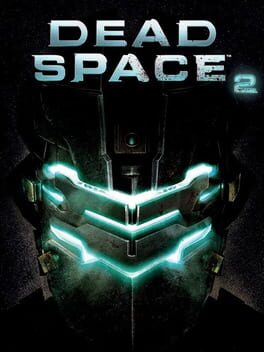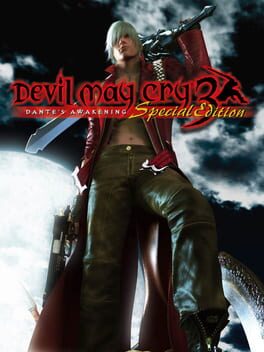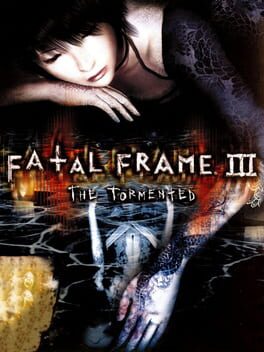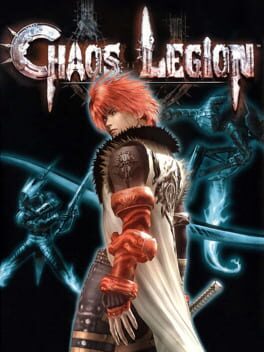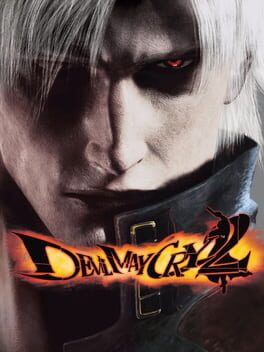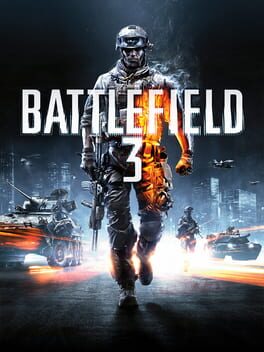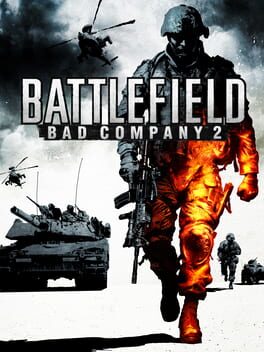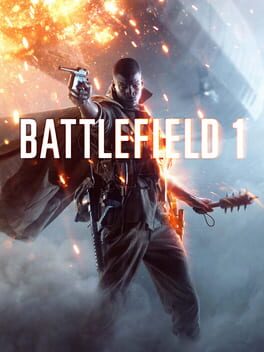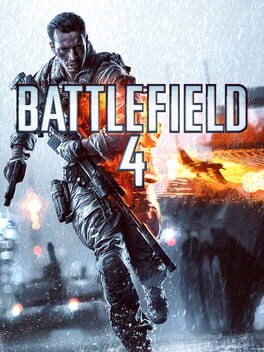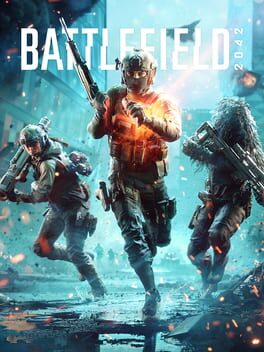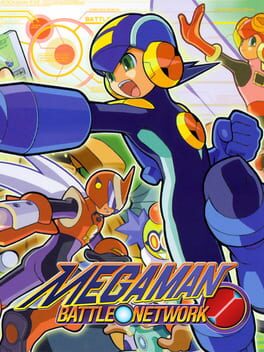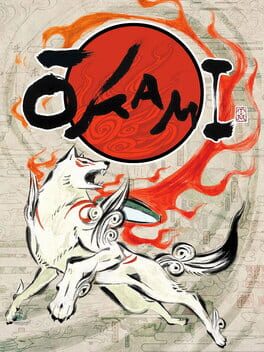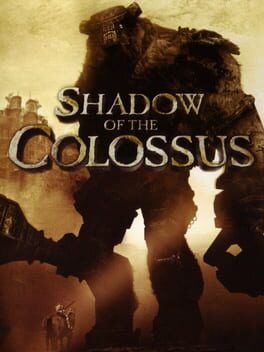Diegoisciu
54 reviews liked by Diegoisciu
Dead Space 2
2011
Tiene más acción que el original pero no sé porque la gente suele ver eso como algo malo. El original ya era más un juego de acción con elementos de horror, nunca fue un Silent Hill. Me gusta que Isaac ahora tiene personalidad y puede hablar, la historia y resto de personajes también son más interesantes.
Killer7
2005
De los pocos juegos que puedo decir que no se podría sacar en estos tiempos... eso es lo que diría un edgy de mierda. La verdad es que salen juegos y obras similares pero dirigidos hacia un nicho de persona y no para el mainstream. Violencia? Normal no? Lo vemos siempre, pero aquí es violencia hacia la mujer, algo que no está normalizado como si la violencia hacía personajes masculinos, insultos, humillaciones, abusos y muertes de niños? Una verdadera joya de culto de la generacion de la GC.
En fin, a lo que iba. Si bien mi experiencia con Killer fue mixta, principalmente por su horrible, tedioso y arcaico gameplay, todo lo demás me hizo aguantar este aspecto ya que su historia, simbolismos y humor/tono me encantaron y se nota la mano de Suda51 aquí. Es tanto así que si nos referimos solamente a la narrativa, considero a Killer7 como mi obra favorita de Suda51 (al menos de las obras que he jugado).
La historia es un poco complicada de entender así que te recomiendo que
veas este video que lo explica perfectamente
https://www.youtube.com/watch?v=XSA691rE2bg. No digo que te veas ese
video y no lo juegues, no, lo que tienes que hacer es jugar todo el
juego y sacar tus propias conclusiones y luego ver el video
Lo que daría porque Suda51 volviese a hacer un juego de este estilo pero mucho más pulido en cuanto al gameplay. Como sucedió con NMH que el primero era... bueno, jugable, pero con el 3 hicieron que ele gameplay fuese una delicia. Tengo entendido que la historia original quería ser más desarrollada pero no pudieron. Por eso mismo creo que si hicieran un remake podrían hacer la historia que realmente querían hacer en un principio.
En fin, a lo que iba. Si bien mi experiencia con Killer fue mixta, principalmente por su horrible, tedioso y arcaico gameplay, todo lo demás me hizo aguantar este aspecto ya que su historia, simbolismos y humor/tono me encantaron y se nota la mano de Suda51 aquí. Es tanto así que si nos referimos solamente a la narrativa, considero a Killer7 como mi obra favorita de Suda51 (al menos de las obras que he jugado).
La historia es un poco complicada de entender así que te recomiendo que
veas este video que lo explica perfectamente
https://www.youtube.com/watch?v=XSA691rE2bg. No digo que te veas ese
video y no lo juegues, no, lo que tienes que hacer es jugar todo el
juego y sacar tus propias conclusiones y luego ver el video
Lo que daría porque Suda51 volviese a hacer un juego de este estilo pero mucho más pulido en cuanto al gameplay. Como sucedió con NMH que el primero era... bueno, jugable, pero con el 3 hicieron que ele gameplay fuese una delicia. Tengo entendido que la historia original quería ser más desarrollada pero no pudieron. Por eso mismo creo que si hicieran un remake podrían hacer la historia que realmente querían hacer en un principio.
Operation 7
2009
dmc3 lies in the center of a hinge point in action game design, wedding the linear structures and rigid scenarios of before to a novel, thrillingly expressive combat system. much in the way the original dmc opened the door for nuanced and free-flowing aggression divorced from the three-hit combos of the past, so too did dmc3 give birth to staggering flexibility in combo composition and approach. the buttery smooth interruptible frames on each attack, the instantaneous weapon switching mid-combo, and the subtle additions of so many cute pieces of kit (the crazy combos! riding enemies! swinging on the pole!) comprise just the basics for how rich dmc3's combat can get.
of the updates to the first two games, the most innovative is the style system, which undergirds much of that aforementioned flexibility. this mechanic lets the player select a set of contextual actions to bind to the circle button, where each set fundamentally upheaves dante's capabilities. while the early-game toolkit for each style is restrictive, the fully-upgraded variants of each of the core styles offers a wealth of fresh options to those willing to dig. of these the most interesting are swordmaster and royalguard, the former of which gives dante a full secondary button of attacks (including aerial raves, blessedly rescued from dmc2) while the latter imbues dante with a powerful parry and rage mechanic. what separates dante's parry from many modern implementations is the stricter timing for successful parries versus blocks with chip damage, as well as the ability to release all stored rage at once with strict timing in an extremely potent "just release." the trickster and gunslinger abilities are also equally interesting, although I personally did not invest a lot of time in gunslinger, while trickster mainly serves as additional evasion for those who want to supplant dante's built-in dodge roll and jumping i-frames (which is not to say I didn't use it! I used it plenty, and air trick is cool af).
however, dmc3 still resides within the classic character action structure of item puzzles, interconnected areas, and hidden secrets strewn throughout the demon tower central to the game's narrative. like I mentioned in last year's ninja gaiden black review, this structure still dominated the burgeoning character action genre up through the end of the ps2 era. this essential contradiction between stiff scenarios and loose gameplay systems both makes dmc3 a fascinating relic of its era as well as a harder sell for someone first exposed to the genre through metal gear rising revengeance or one of the bayonettas.
the first place this becomes apparent is in the enemy design. dmc3's main popcorn enemies (the hells) help buoy the game's reputation as a combo showcase while also being formidable foes in their own right, especially the lusts with their hectic pace and dashing slices as well as the teleporting, lumbering sloths. however, the remaining foes veer into requiring stricter strategies for their defeat. the blood-goyles, for instance, mandate that the player shoot their intangible forms repeatedly until calcifying into a hardened form that dante can damage. the soul eaters are another good example of this, where they exist in an gaseous mist until dante turns his back to them, allowing them to gel into a demonic squid and charge at dante from behind. these enemies change the combat from being very player-driven to rather enemy-driven when they appear. the encounters themselves also often avoid being pure combat arenas in favor of including specific objectives, such as fighting on the runaway temperance wagon while enigmas take potshots at you from a separate rail, or the late-game hourglass fight that reverses the flow of time if you fail to clear the room in time. these areas further predicate the player's success on their ability to adapt to a specific context rather than twist the pace of the fight to match their preferences.
this is not necessarily an appealing proposition to those hoping to spend the entire game freestyling to their heart's content, and I sympathize with this point of view. however, because dante is restricted to two guns, two weapons, and a single style, the ordering of fixed encounters with predictable enemy arrangements and locations creates an interesting dilemma for the player when selecting a loadout. the desire to use comfortable tools clashes with the need to select optimal arrangements to deal with these more puzzle-like enemies, but with the vast variety of options at dante's disposal, the choices rarely feel prescribed. the soul eaters may be quickly dispatched by the handguns' backwards shot in the gunslinger style, but the player could also find spots in the environment to trap them in order to combo off of (such as the balcony railing in the altar of evil room), or they can use a few of their devil trigger orbs for a powerful devil trigger explosion. exploiting the environment and synergizing a build to match whatever encounters you're struggling with adds a mindfulness to the otherwise-impulsive combat.
exploring different loadouts for different scenarios becomes even more important when it comes to the game's many bosses. each of the bosses runs the gamut in terms of what skills they require from the player, and with that comes exploring the separate tools that work best with each. beowulf, for example, has a three-hit combo in his first phase that can easily be air parried to store up a massive just release, taking off an excessive amount of health (nearly a third on DMD difficulty!). alternatively, I found that beowulf's powerful phase 2 attacks frequently crushed my guarding, and thus found myself using trickster more often to evade the frequent wooden cages he brings crashing from the sky. cerberus at first glance seemed apt for switch canceling between the rifle and the handguns, but I also found merit in maximizing DPS with the swordmaster style, alternating rebellion and agni & rudra in the air to take out each head as quickly as possible. admittedly these are two of the more robust bosses; fights like nevan and vergil err more on the side of call-and-response, where the player can use basically any tactic as long as they can respond to the movesets of each, while the late-game doppleganger centers environmental interaction with lights on the field that are used to stun the boss. while these bosses rely less on loadout experimentation, they still require attention to detail by the player in order to maximize damage output, locate weak positions, and learn proper spacings.
dante must die, the final difficulty mode, pushes the element of loadout creation and room routing to both its highest and lowest points. unquestionably DMD's balancing is far too skewed in favor of buffing up enemy health to pure sponge levels. when it comes to rooms primarily consisting of the hells, this gives the player some room to breathe in terms of constructing more elaborate combos, but at the same time the length of these encounters and the diminished stagger on enemies that have entered their devil trigger makes repeated jump-canceled moves a safer option. enemies such as the fallen go from tests of aerial mastery to slogging through the same repeated inputs in between waiting for their sword spin to finish. the tedium approaches agony in the latter half of the game, where a boss like geryon with an interesting multi-phase moveset and time-slow traps transforms into a claustrophic nightmare where the only reasonable way to approach it itemless is by stunlocking it in a loop. the chessboard scenario late in the game takes the awesome concept of fighting off a full set of chess pieces (including pawns that respawn as other units if you let them reach the board's end) to an obnoxiously long war of attrition repeatedly spamming killer bee on the king. dmd heightens the contradiction between rigid scenario and expressive gameplay to such an extent that I don't necessarily think it's worth pursuing for most people.
by comparison, very hard was incredibly enjoyable and allowed total flexibility in approach, and its status as the american hard mode and lack of enemy DT made decision-making and routing less of an issue. that's totally fine! the game bursts to its seams with combat features that getting to freestyle more often isn't a detriment in the slightest. however, it must be said that getting to fight for my life through dmd, balancing issues aside, did satisfy that unique sense of routing and pre-planning that few others in the genre can attest to. the sheer difficulty and bulky enemies led me to incorporate techniques I would otherwise ignored, from guard-canceling reverb shocks with nevan to experimenting with artemis' upgrades in the gunslinger style; I still have so much to learn in terms of experimenting with each aspect of dante's toolkit. managing devil trigger as a resource also becomes so much more essential on dmd given the massive power of the DTE and its usefulness both for quick health and as a shield of sorts when mitigating an unavoidable attack. reading and watching the sheer variety of strategies across the game has become a meta-feature of the game's depth that has enraptured me since I began delving more into the game myself over the last few months. even the chessboard has a reasonable quicksilver strat, though to say this makes the fight significantly more interesting may be overselling it. dmc3's status as the harbringer of player-driven combat expression while still remaining entrenched in enemy-driven scenario solutions gives it a unique mechanical blend that cements it as an iconic pillar of the genre.
I certainly wouldn't hold it over anyone if they wanted to try the switch port and how it allows the player to use their entire arsenal simultaneously; the mayhem you can get up to is astonishing. hell, if I play dmd again it might be on that port just to see how it fundamentally changes the experience (I've heard that it evens out much of the annoying shit, especially regarding bosses). there certainly is something worth investigating here in its original form though that hasn't been replicated since; newer titles like astral chain that lean into the adventure elements are doing so having absorbed over a decade of AAA tropes since dmc3's release, and fresh titles like bayonetta 3 compartmentalize their setpieces while dmc3 makes them part and parcel with the combat. although the contradictory nature of this particular flavor of 3D action has unsurprisingly gone out of style, I still feel affectionate to the way it ushered in our modern conception of stylish combat while paying tribute to the RE-derived scenario design all these games owe so much to.
of the updates to the first two games, the most innovative is the style system, which undergirds much of that aforementioned flexibility. this mechanic lets the player select a set of contextual actions to bind to the circle button, where each set fundamentally upheaves dante's capabilities. while the early-game toolkit for each style is restrictive, the fully-upgraded variants of each of the core styles offers a wealth of fresh options to those willing to dig. of these the most interesting are swordmaster and royalguard, the former of which gives dante a full secondary button of attacks (including aerial raves, blessedly rescued from dmc2) while the latter imbues dante with a powerful parry and rage mechanic. what separates dante's parry from many modern implementations is the stricter timing for successful parries versus blocks with chip damage, as well as the ability to release all stored rage at once with strict timing in an extremely potent "just release." the trickster and gunslinger abilities are also equally interesting, although I personally did not invest a lot of time in gunslinger, while trickster mainly serves as additional evasion for those who want to supplant dante's built-in dodge roll and jumping i-frames (which is not to say I didn't use it! I used it plenty, and air trick is cool af).
however, dmc3 still resides within the classic character action structure of item puzzles, interconnected areas, and hidden secrets strewn throughout the demon tower central to the game's narrative. like I mentioned in last year's ninja gaiden black review, this structure still dominated the burgeoning character action genre up through the end of the ps2 era. this essential contradiction between stiff scenarios and loose gameplay systems both makes dmc3 a fascinating relic of its era as well as a harder sell for someone first exposed to the genre through metal gear rising revengeance or one of the bayonettas.
the first place this becomes apparent is in the enemy design. dmc3's main popcorn enemies (the hells) help buoy the game's reputation as a combo showcase while also being formidable foes in their own right, especially the lusts with their hectic pace and dashing slices as well as the teleporting, lumbering sloths. however, the remaining foes veer into requiring stricter strategies for their defeat. the blood-goyles, for instance, mandate that the player shoot their intangible forms repeatedly until calcifying into a hardened form that dante can damage. the soul eaters are another good example of this, where they exist in an gaseous mist until dante turns his back to them, allowing them to gel into a demonic squid and charge at dante from behind. these enemies change the combat from being very player-driven to rather enemy-driven when they appear. the encounters themselves also often avoid being pure combat arenas in favor of including specific objectives, such as fighting on the runaway temperance wagon while enigmas take potshots at you from a separate rail, or the late-game hourglass fight that reverses the flow of time if you fail to clear the room in time. these areas further predicate the player's success on their ability to adapt to a specific context rather than twist the pace of the fight to match their preferences.
this is not necessarily an appealing proposition to those hoping to spend the entire game freestyling to their heart's content, and I sympathize with this point of view. however, because dante is restricted to two guns, two weapons, and a single style, the ordering of fixed encounters with predictable enemy arrangements and locations creates an interesting dilemma for the player when selecting a loadout. the desire to use comfortable tools clashes with the need to select optimal arrangements to deal with these more puzzle-like enemies, but with the vast variety of options at dante's disposal, the choices rarely feel prescribed. the soul eaters may be quickly dispatched by the handguns' backwards shot in the gunslinger style, but the player could also find spots in the environment to trap them in order to combo off of (such as the balcony railing in the altar of evil room), or they can use a few of their devil trigger orbs for a powerful devil trigger explosion. exploiting the environment and synergizing a build to match whatever encounters you're struggling with adds a mindfulness to the otherwise-impulsive combat.
exploring different loadouts for different scenarios becomes even more important when it comes to the game's many bosses. each of the bosses runs the gamut in terms of what skills they require from the player, and with that comes exploring the separate tools that work best with each. beowulf, for example, has a three-hit combo in his first phase that can easily be air parried to store up a massive just release, taking off an excessive amount of health (nearly a third on DMD difficulty!). alternatively, I found that beowulf's powerful phase 2 attacks frequently crushed my guarding, and thus found myself using trickster more often to evade the frequent wooden cages he brings crashing from the sky. cerberus at first glance seemed apt for switch canceling between the rifle and the handguns, but I also found merit in maximizing DPS with the swordmaster style, alternating rebellion and agni & rudra in the air to take out each head as quickly as possible. admittedly these are two of the more robust bosses; fights like nevan and vergil err more on the side of call-and-response, where the player can use basically any tactic as long as they can respond to the movesets of each, while the late-game doppleganger centers environmental interaction with lights on the field that are used to stun the boss. while these bosses rely less on loadout experimentation, they still require attention to detail by the player in order to maximize damage output, locate weak positions, and learn proper spacings.
dante must die, the final difficulty mode, pushes the element of loadout creation and room routing to both its highest and lowest points. unquestionably DMD's balancing is far too skewed in favor of buffing up enemy health to pure sponge levels. when it comes to rooms primarily consisting of the hells, this gives the player some room to breathe in terms of constructing more elaborate combos, but at the same time the length of these encounters and the diminished stagger on enemies that have entered their devil trigger makes repeated jump-canceled moves a safer option. enemies such as the fallen go from tests of aerial mastery to slogging through the same repeated inputs in between waiting for their sword spin to finish. the tedium approaches agony in the latter half of the game, where a boss like geryon with an interesting multi-phase moveset and time-slow traps transforms into a claustrophic nightmare where the only reasonable way to approach it itemless is by stunlocking it in a loop. the chessboard scenario late in the game takes the awesome concept of fighting off a full set of chess pieces (including pawns that respawn as other units if you let them reach the board's end) to an obnoxiously long war of attrition repeatedly spamming killer bee on the king. dmd heightens the contradiction between rigid scenario and expressive gameplay to such an extent that I don't necessarily think it's worth pursuing for most people.
by comparison, very hard was incredibly enjoyable and allowed total flexibility in approach, and its status as the american hard mode and lack of enemy DT made decision-making and routing less of an issue. that's totally fine! the game bursts to its seams with combat features that getting to freestyle more often isn't a detriment in the slightest. however, it must be said that getting to fight for my life through dmd, balancing issues aside, did satisfy that unique sense of routing and pre-planning that few others in the genre can attest to. the sheer difficulty and bulky enemies led me to incorporate techniques I would otherwise ignored, from guard-canceling reverb shocks with nevan to experimenting with artemis' upgrades in the gunslinger style; I still have so much to learn in terms of experimenting with each aspect of dante's toolkit. managing devil trigger as a resource also becomes so much more essential on dmd given the massive power of the DTE and its usefulness both for quick health and as a shield of sorts when mitigating an unavoidable attack. reading and watching the sheer variety of strategies across the game has become a meta-feature of the game's depth that has enraptured me since I began delving more into the game myself over the last few months. even the chessboard has a reasonable quicksilver strat, though to say this makes the fight significantly more interesting may be overselling it. dmc3's status as the harbringer of player-driven combat expression while still remaining entrenched in enemy-driven scenario solutions gives it a unique mechanical blend that cements it as an iconic pillar of the genre.
I certainly wouldn't hold it over anyone if they wanted to try the switch port and how it allows the player to use their entire arsenal simultaneously; the mayhem you can get up to is astonishing. hell, if I play dmd again it might be on that port just to see how it fundamentally changes the experience (I've heard that it evens out much of the annoying shit, especially regarding bosses). there certainly is something worth investigating here in its original form though that hasn't been replicated since; newer titles like astral chain that lean into the adventure elements are doing so having absorbed over a decade of AAA tropes since dmc3's release, and fresh titles like bayonetta 3 compartmentalize their setpieces while dmc3 makes them part and parcel with the combat. although the contradictory nature of this particular flavor of 3D action has unsurprisingly gone out of style, I still feel affectionate to the way it ushered in our modern conception of stylish combat while paying tribute to the RE-derived scenario design all these games owe so much to.
A seasoned understanding of the series strengths, Fatal Frame 3 contains some of the best scares of the trilogy, with a good dosage of effective and earned jumpscares and subdued moments of increasing unease and tension developed through the masterful environmental storytelling and its ever present voyeuristic fixed camera, additionally course correcting the lack of challenge from FF2 with a much more scarce availableness of ammo and health aids that hearken back to the last tense hours of FF1.
Taking survival's guilt as its core premise, FF3 is a more introspective journey than its more fetishistic predecessors, antagonizing its main character Rei with grief through unsettling hauntings that invade the player's safe space long after your wanderings inside the nightmarish Shintoistic mansion game world, in a similar fashion to what Silent Hill 4 succeeded with its titular room and ultimately the unique aspect that makes FF3 stand out from the remaining series.
It's shame that FF3 spends so much of its time with Rei out of the spotlight in service of other playable characters. It certainly benefits the now familiar setting of the series, as it creates some of the more understated hair raising moments from the mere act of opening a door to suddenly find yourself in an area from FF1 or FF2, while also elevating its dream mansion with a maze-like set of hallways and rooms that have a propensity to make you feel lost.
But the overbloated runtime plagues the game with patience testing backtracking that turn the dread of familiarity betrayal into exhausting fetch quests that have you passing through the same static corridors more than enough times, a feeling exacerbated for players who have done the FF song and dance before FF3. And the added characters introduced with the intent to connect all 3 FF games into one over-arching story rob Rei's inner turmoil of a more deserving focused storyline.
It doesn't contain the brevity of FF1 nor the cohesiveness of FF2, and it definitely starts to feel like a dead end to a series that would expand into even more polarizing and acquired taste sequels. But it ties the trilogy neatly with sorrowful bow, as it manages to combine the core themes of the series with a more grounded and personal ghostly tale that provides the series with a poignant and oddly satisfying happy closure to a series so defined by its tragic haunting tales.
Taking survival's guilt as its core premise, FF3 is a more introspective journey than its more fetishistic predecessors, antagonizing its main character Rei with grief through unsettling hauntings that invade the player's safe space long after your wanderings inside the nightmarish Shintoistic mansion game world, in a similar fashion to what Silent Hill 4 succeeded with its titular room and ultimately the unique aspect that makes FF3 stand out from the remaining series.
It's shame that FF3 spends so much of its time with Rei out of the spotlight in service of other playable characters. It certainly benefits the now familiar setting of the series, as it creates some of the more understated hair raising moments from the mere act of opening a door to suddenly find yourself in an area from FF1 or FF2, while also elevating its dream mansion with a maze-like set of hallways and rooms that have a propensity to make you feel lost.
But the overbloated runtime plagues the game with patience testing backtracking that turn the dread of familiarity betrayal into exhausting fetch quests that have you passing through the same static corridors more than enough times, a feeling exacerbated for players who have done the FF song and dance before FF3. And the added characters introduced with the intent to connect all 3 FF games into one over-arching story rob Rei's inner turmoil of a more deserving focused storyline.
It doesn't contain the brevity of FF1 nor the cohesiveness of FF2, and it definitely starts to feel like a dead end to a series that would expand into even more polarizing and acquired taste sequels. But it ties the trilogy neatly with sorrowful bow, as it manages to combine the core themes of the series with a more grounded and personal ghostly tale that provides the series with a poignant and oddly satisfying happy closure to a series so defined by its tragic haunting tales.
Chaos Legion
2003
Going into this game I thought it would be something like dynasty warriors but with monsters which is a really cool concept. Sadly there are a lot of factors that prevent this game from living up to its cool concept. For starters, some enemies in the early stages take way too many hits before they go down which leads to extremely tedious scenarios where I continually comboed an enemy for what felt like minutes. This problem is remedied later when you upgrade but it took me about halfway into the game when it became more manageable.
Another problem came in the form of the game's main concept of using "Legions"(big monsters) to help you fight enemies. Each stage lets you select two Legions to equip the problem is you don't know which Legion will be most useful so you end up forcing your way through a level that you know would have been a lot easier if you stuck with a certain build. This is what I ended up doing for the rest of the game, sticking with two legions and not touching the others, which proved to be pretty effective.
One of the last problems is the game balancing which seems to be all over the place. One level will be relatively easy while the next will have you being bombarded by enemies that juggle you into a corner until you are dead. Some of the bosses I also find incredibly annoying and tedious but this is also improved on a little towards the end.
I don't think this is a horrible game by any means but I was hoping for a little more. It does get better as you upgrade your legions and become a force of nature against tons of enemies but it takes a little bit until you get to that point. I feel the biggest complaint I have is its spongey enemies. Besides that this game is relatively inoffensive. I will commend this game for actually having a fun final boss. A lot of games around this time usually have stinker endings but this one was pretty fun.
Another problem came in the form of the game's main concept of using "Legions"(big monsters) to help you fight enemies. Each stage lets you select two Legions to equip the problem is you don't know which Legion will be most useful so you end up forcing your way through a level that you know would have been a lot easier if you stuck with a certain build. This is what I ended up doing for the rest of the game, sticking with two legions and not touching the others, which proved to be pretty effective.
One of the last problems is the game balancing which seems to be all over the place. One level will be relatively easy while the next will have you being bombarded by enemies that juggle you into a corner until you are dead. Some of the bosses I also find incredibly annoying and tedious but this is also improved on a little towards the end.
I don't think this is a horrible game by any means but I was hoping for a little more. It does get better as you upgrade your legions and become a force of nature against tons of enemies but it takes a little bit until you get to that point. I feel the biggest complaint I have is its spongey enemies. Besides that this game is relatively inoffensive. I will commend this game for actually having a fun final boss. A lot of games around this time usually have stinker endings but this one was pretty fun.
Esta es una experiencia increible que le recomiendo a cualquier persona que tenga el mas minimo interes por este medio, para dejarlo simple y no revelar mucho para los que no lo han jugado solo dire que su jugabilidad e historia son excelentes y que los temas que trata dejan al jugador con mucho con lo que reflexionar.
Ahora hablando con detalle, empezando con la jugabilidad, lo que siento que la hace excelente es su gran atencion al detalle y la gran cantidad de opciones que le dan al jugador para enfrentarse a desafios no solo en situaciones de sigilo pero tambien para cuando uno es descubierto sin eleminar el enfoque en las infiltraciones al hacer que los enfrentamientos al activar una alerta sean mas dificiles, no solo por la cantidad de refuerzos con los que tendras que lidiar sino tambien por lo facil que es recibir daño en estas situaciones, esto crea un balance en el que se te insentiva a ser sigiloso pero no te quita las opciones por si fallas en esto. Para explicar a lo que me refiero con su atencion al detalle dare un par de ejemplos, se pueden fumar cigarrillos para usar el humo que generan para ver laseres de explosivos, Snake puede resfriarse lo que hace que estornude alertando guardias, agarrarse del borde de un acantilado te permite hacer barras con el para aumentar tu nivel de agarre el cual ayuda a sostenerte por mas tiempo, los enemigos se pueden quedar dormidos al patrullar, varias acciones activan llamadas de codec graciosas, cuando un grupo investiga una zona la revisan como lo haria un grupo de soldados reales, el spray para congelar bombas puede aturdir tambien a enemigos, dependiendo de cuales capitulos escojas escucharas dialogos diferentes, se le puede disparar a ciertas tuberias con vapor haciendo que estas aturdan a enemigos, se pueden lanzar revistas para distraer a soldados, entre muchos otros mas que valen la pena descubrirlos por uno mismo, creo que estos detalles son importantes porque no solo brindan mas posibilades para el jugador si no que tambien crean un sentimiento de realismo haciendo que sea facil para el jugador sentirse inmerso en lo que hace, incluso cosas como que se le puedan quitar chapas de identificacion a los soldados cuando se les detiene hace que sepamos sus nombres lo cual puede lograr que pensemos dos veces si matarlos sea necesario, es algo bastante simple pero siento que es efectivo porque ayuda a darle un rostro a los soldados enemigos, lo mejor es que si decides matarlos el juego no te lo reprocha ni te castiga por ello ya que al final de todo es parte de ese tipo de misiones, mas que nada esto esta pensado para que actuemos como creamos que el protagonista que controlamos actuaria. En general siento que la jugabilidad es excelente, hay unas cosas que me solian molestar pero cuando veo cuales pudieron ser sus intenciones no los veo como errores, por ejemplo que sea necesario activar nodos para usar el radar en las diferentes areas, hubiese preferido que el radar funcionara completamente sin estos pero puedo entender que esto se haya hecho para que el jugador sea mas precavido de lo normal al entrar en una area que no habia entrado antes, una cosa que no perdono del todo es como en la seccion que tienes que abrir la puerta con el escaner de retina no se pueda usar a un guardia inconciente, entiendo que puede ser para que mantenga los ojos abiertos pero se siente mas que nada como una mala excusa, en fin, esto es un error minimo y no quita que el sistema jugable sea increible.
Ahora, su historia es perfecta, desde como trata la trama de la mision de los patriotas usando a Raiden, el plan de Solidus, el que varios aspectos de la historia sean dificiles de entender a proposito, el como hay varios momentos que hacen dudar al jugador de lo que si esta viendo es real en la historia, que Raiden este pensado para que el jugador se identifique con el, incluso aspectos como que la mayoria de Dead Cell no sean tan memorables como los miembros de FOXHOUND se puede entender al escuchar como Ocelot se refiere a ellos cuando explica porque fueron elegidos y en general lo que mas me gusta es como el juego trata el tema de lo que consideramos como la verdad y el valor del libre albedrio, debo mencionar lo que mas se conoce de este juego ya que tambien es importante, el plan de los patriotas usando a GW, este plan se explica en total detalle durante la ultima llamada de Codec y es de los momentos mas poderosos que haya experimentado con cualquier medio por el hecho de que no solo se volvio realidad lo que dijeron sobre el internet sino que seguira siendo cierto mientras el internet siga existiendo, lo mas impresionante sobre este mensaje casi que profetico es que se dijo en un tiempo en el que aun se estaba entendiendo las capacidades del internet, osea existian forums y archives donde las personas presentaban esta actitud por la que temian los patriotas, pero estos eran grupos de nicho y la poblacion general aun no habia presenciado todo lo que se podria hacer con este avanze tecnologico, tengo entendido que mucho antes de que el internet existiera habian escritores y poetas que temian que sucediera lo mismo pero con los libros, es probable que los escritores de este juego siguieran este tren de pensamiento y lo extendieran al internet, pero eso no quita lo impresionante que es que predijeran con tal aterradora precision en lo que se volveria el internet, todo esto teniendo que ver con los temas sobre lo que es verdad y el libre albedrio culminando con el dialogo final de Snake, el cual es otro de mis momentos favoritos de cualquier medio, ya que llega en un momento en el que es probable que el jugador se este haciendo muchas preguntas sobre la experiencia que tuvo, para luego tener a Snake hablando directamente con nosotros y darnos a entender que no importa si lo que vimos sea real o no o sobre que sea verdaderamente cierto, si no que nosotros decidamos que sea cierto mediante las experiencias que tengamos, lo que escuchemos y los que nos motive a hacer lo que sintamos que sea correcto, y por ultimo este dialogo termina hablando de cierta forma sobre diferentes medios entre ellos los videojuegos y nos dice que no importa si las historias o eventos en estos no sean reales, estas tienen permitidas hacernos sentir emociones, motivarnos o inspirarnos, el mensaje completo es extremadamente hermoso y siento que cualquier persona que le apasionen o les gusten estos medios artisticos deberian escucharlo, para culminar, quiero mencionar lo genial que es como este juego comenta sobre las espectativas de los jugadores por las secuelas, la forma en que el equipo engaño a la audiencia antes de la salida del juego para que todos creyeran que el protagonista volveria a ser Snake fue una movida arriesgada pero que funciono al final, como todos los sucesos del juego repetian al pie de la letra lo que sucedio en MGS durante la mision en Shadow Moses y finalmente la forma en que Raiden es basicamente el opuesto a Snake, simplemente brillante.
Por todas estas razones es que considero a este juego como una obra maestra, incluso si tenga alguna queja o dos, sus grandes logros terminan opacando completamente estos quiza errores, un juego que siento que todos deben experimentar.
Si leyeron todo esto, gracias y perdon por mi mala redaccion.
Ahora hablando con detalle, empezando con la jugabilidad, lo que siento que la hace excelente es su gran atencion al detalle y la gran cantidad de opciones que le dan al jugador para enfrentarse a desafios no solo en situaciones de sigilo pero tambien para cuando uno es descubierto sin eleminar el enfoque en las infiltraciones al hacer que los enfrentamientos al activar una alerta sean mas dificiles, no solo por la cantidad de refuerzos con los que tendras que lidiar sino tambien por lo facil que es recibir daño en estas situaciones, esto crea un balance en el que se te insentiva a ser sigiloso pero no te quita las opciones por si fallas en esto. Para explicar a lo que me refiero con su atencion al detalle dare un par de ejemplos, se pueden fumar cigarrillos para usar el humo que generan para ver laseres de explosivos, Snake puede resfriarse lo que hace que estornude alertando guardias, agarrarse del borde de un acantilado te permite hacer barras con el para aumentar tu nivel de agarre el cual ayuda a sostenerte por mas tiempo, los enemigos se pueden quedar dormidos al patrullar, varias acciones activan llamadas de codec graciosas, cuando un grupo investiga una zona la revisan como lo haria un grupo de soldados reales, el spray para congelar bombas puede aturdir tambien a enemigos, dependiendo de cuales capitulos escojas escucharas dialogos diferentes, se le puede disparar a ciertas tuberias con vapor haciendo que estas aturdan a enemigos, se pueden lanzar revistas para distraer a soldados, entre muchos otros mas que valen la pena descubrirlos por uno mismo, creo que estos detalles son importantes porque no solo brindan mas posibilades para el jugador si no que tambien crean un sentimiento de realismo haciendo que sea facil para el jugador sentirse inmerso en lo que hace, incluso cosas como que se le puedan quitar chapas de identificacion a los soldados cuando se les detiene hace que sepamos sus nombres lo cual puede lograr que pensemos dos veces si matarlos sea necesario, es algo bastante simple pero siento que es efectivo porque ayuda a darle un rostro a los soldados enemigos, lo mejor es que si decides matarlos el juego no te lo reprocha ni te castiga por ello ya que al final de todo es parte de ese tipo de misiones, mas que nada esto esta pensado para que actuemos como creamos que el protagonista que controlamos actuaria. En general siento que la jugabilidad es excelente, hay unas cosas que me solian molestar pero cuando veo cuales pudieron ser sus intenciones no los veo como errores, por ejemplo que sea necesario activar nodos para usar el radar en las diferentes areas, hubiese preferido que el radar funcionara completamente sin estos pero puedo entender que esto se haya hecho para que el jugador sea mas precavido de lo normal al entrar en una area que no habia entrado antes, una cosa que no perdono del todo es como en la seccion que tienes que abrir la puerta con el escaner de retina no se pueda usar a un guardia inconciente, entiendo que puede ser para que mantenga los ojos abiertos pero se siente mas que nada como una mala excusa, en fin, esto es un error minimo y no quita que el sistema jugable sea increible.
Ahora, su historia es perfecta, desde como trata la trama de la mision de los patriotas usando a Raiden, el plan de Solidus, el que varios aspectos de la historia sean dificiles de entender a proposito, el como hay varios momentos que hacen dudar al jugador de lo que si esta viendo es real en la historia, que Raiden este pensado para que el jugador se identifique con el, incluso aspectos como que la mayoria de Dead Cell no sean tan memorables como los miembros de FOXHOUND se puede entender al escuchar como Ocelot se refiere a ellos cuando explica porque fueron elegidos y en general lo que mas me gusta es como el juego trata el tema de lo que consideramos como la verdad y el valor del libre albedrio, debo mencionar lo que mas se conoce de este juego ya que tambien es importante, el plan de los patriotas usando a GW, este plan se explica en total detalle durante la ultima llamada de Codec y es de los momentos mas poderosos que haya experimentado con cualquier medio por el hecho de que no solo se volvio realidad lo que dijeron sobre el internet sino que seguira siendo cierto mientras el internet siga existiendo, lo mas impresionante sobre este mensaje casi que profetico es que se dijo en un tiempo en el que aun se estaba entendiendo las capacidades del internet, osea existian forums y archives donde las personas presentaban esta actitud por la que temian los patriotas, pero estos eran grupos de nicho y la poblacion general aun no habia presenciado todo lo que se podria hacer con este avanze tecnologico, tengo entendido que mucho antes de que el internet existiera habian escritores y poetas que temian que sucediera lo mismo pero con los libros, es probable que los escritores de este juego siguieran este tren de pensamiento y lo extendieran al internet, pero eso no quita lo impresionante que es que predijeran con tal aterradora precision en lo que se volveria el internet, todo esto teniendo que ver con los temas sobre lo que es verdad y el libre albedrio culminando con el dialogo final de Snake, el cual es otro de mis momentos favoritos de cualquier medio, ya que llega en un momento en el que es probable que el jugador se este haciendo muchas preguntas sobre la experiencia que tuvo, para luego tener a Snake hablando directamente con nosotros y darnos a entender que no importa si lo que vimos sea real o no o sobre que sea verdaderamente cierto, si no que nosotros decidamos que sea cierto mediante las experiencias que tengamos, lo que escuchemos y los que nos motive a hacer lo que sintamos que sea correcto, y por ultimo este dialogo termina hablando de cierta forma sobre diferentes medios entre ellos los videojuegos y nos dice que no importa si las historias o eventos en estos no sean reales, estas tienen permitidas hacernos sentir emociones, motivarnos o inspirarnos, el mensaje completo es extremadamente hermoso y siento que cualquier persona que le apasionen o les gusten estos medios artisticos deberian escucharlo, para culminar, quiero mencionar lo genial que es como este juego comenta sobre las espectativas de los jugadores por las secuelas, la forma en que el equipo engaño a la audiencia antes de la salida del juego para que todos creyeran que el protagonista volveria a ser Snake fue una movida arriesgada pero que funciono al final, como todos los sucesos del juego repetian al pie de la letra lo que sucedio en MGS durante la mision en Shadow Moses y finalmente la forma en que Raiden es basicamente el opuesto a Snake, simplemente brillante.
Por todas estas razones es que considero a este juego como una obra maestra, incluso si tenga alguna queja o dos, sus grandes logros terminan opacando completamente estos quiza errores, un juego que siento que todos deben experimentar.
Si leyeron todo esto, gracias y perdon por mi mala redaccion.
Devil May Cry 2
2003
3 lists liked by Diegoisciu
